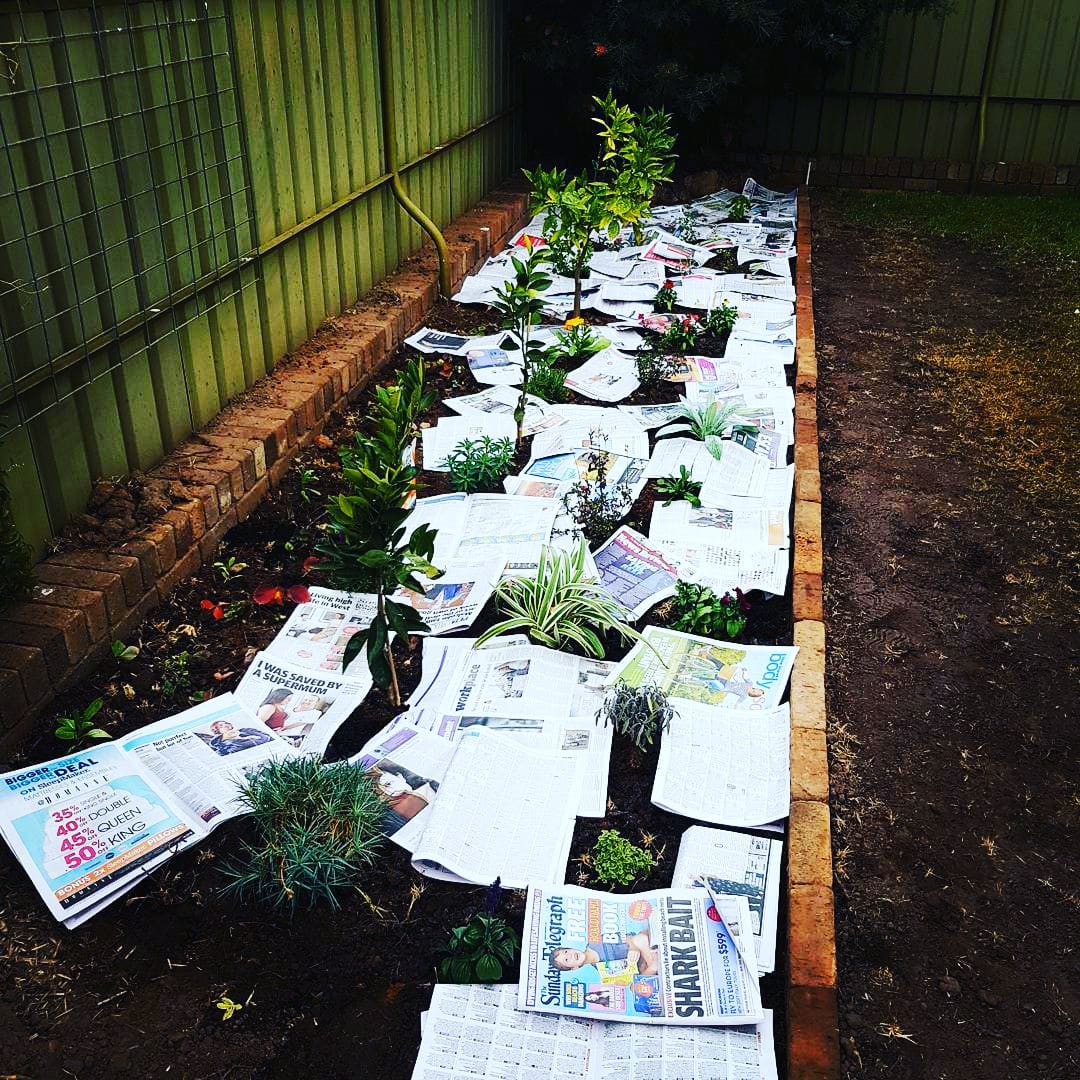
09 Oct Lets Talk About Mulch – A DIY Guide
LETS TALK MULCH – MULCHING SERIES
Ideally mulching should follow weeding and fertilising (if possible). Like weeding I would recommend trying to mulch one area at a time.
Why mulch? Mulch will help retain the moisture in the soil, slow down weed growth, moderate soil temperature in the heat and the cold.
CALCULATING MULCH
How do you know how much mulch you will need ?
It will be dependent on the type of mulch however ideally I would only mulch to a maximum depth of 50mm.
How to calculate mulch?
You will need to measure the area of your garden beds then multiply this by the depth of mulch. This will give you a cubic metre measurement which is the measurement most landscape supply companies will deliver in. Maths is not my strong point so for those of you like me make sure when you do your calculations all measurements are in the same units eg all centimetres or all millimetres or all metres. I find it easier to talk in metres when you do this calculation as then the final unit you have is the unit the landscape supply company talks in. This means a garden bed that is 10 metres by 5 metres = 50 then multiply the area by 0.05m (this is the depth of mulch = 50 mm deep). This will mean you need a 2.5 cubic metres.
If you are purchasing mulch by the bag then they normally have some type of coverage rate listed on the bag.
If you are purchasing mulch as bales of lucerne direct from the farmer then really it will be trial and error. Always try to make sure the bales are free of seedheads and weeds as you don’t want to create another issue in the garden.
Buying in bulk versus bagged
If you have the space you could buy all the mulch in bulk at once then use as needed. Having a stockpile of mulch ready to go for the total garden area can be very handy and it will hopefully save you some money and time.
If you are stockpiling mulch for longer than a month or two then ideally covering the pile with a tarp can be helpful to prevent weed seed from blowing into fresh mulch.
Even buying bagged mulch all at once can save time however it is best kept undercover.
HOW TO SPREAD MULCH
Steps to Mulching
Step 1 – Always water your plants and the soil around them well before mulching.
Step 2 – If you have time and the newspaper or cardboard you can do this step if not skip it. Lay a layer of newspaper over the open soil areas in between your plants and then water this. The newspaper layer should be about 5 – 7 sheets thick and you should only use the traditional newspaper not the paper with the glossy finish. This is an extra layer that acts a physical barrier to help smother any weed growth. It will break down over time.
DO NOT USE BLACK PLASTIC OR WEED MAT FOR THIS LAYER!!!
Step 3 – Spread your chosen mulch over all open areas but be carefuul not to bury any plants in the mulch. Mulch to a maximum depth of 50mm
Step 4 – Water the mulch and plants thoroughly.
You may need to top up mulch through summer but overall weed growth should be slowed down and your plants will be grateful to have that extra layer of insulation on the hot days.
TYPES OF MULCH
Straw is a great mulch for vegetable gardens. It decomposes quickly and improves the soil as it decays
Sugar Cane mulch is made from dried sugar cane leaves. It encourages helpful soil organisms.
Lucerne mulch has the added advantage of giving your soil extra nitrogen as it breaks down.
Wood mulches – these will last a long time on the surface of the garden beds however as they breakdown they do take the nitrogen out of the soil – may need to supplement the level of nitrogen in the soil for the plants. It’s worth just being aware of this you will notice more yellowing leaves if it is causing a problem. Try to use wood mulches that are not dyed and have not just been freshly chipped.
Fallen Autumn Leaves can be gathered up and used as mulch. You should shred them first because whole leaves often blow away or you can also compost those down



